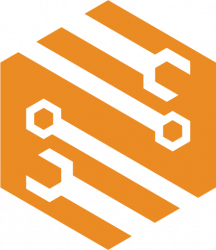Nolop FAST Facility Safety Policy
Nolop is divided into 2 areas:
1. The Green Zone
Tools and equipment in the green zone do not pose substantial danger to novice users. Examples include rulers, screwdrivers, X-acto knives, laser cutters, and 3D printers. Some of the equipment (the laser cutter, 3D printers) requires training to prevent damage to the equipment. This training is provided by online video tutorials. No safety glasses or other protective gear are required in the green zone. The green zone is open roughly 10 AM – 11 PM and supervised by student staff and/or the lab manager.
2. The Red Zone
Tools and equipment in the red zone pose severe danger to novice users, but little to moderate danger to trained users. Examples include the table saw and miter saw. Safety training is provided in person by the facility staff. Only trained Tufts students, faculty, and staff can use the red zone; participants in, for example, pre-college programs cannot. Safety glasses, hair restraints, and non-loose clothing are required at all times. Working alone is prohibited. While not required, pants and closed-toe shoes are recommended, especially if you’re working with heavy, droppable stuff, like plywood. The red zone is open roughly 10 AM – 5 PM, when supervised by the lab manager and special red zone staff (usually a few graduate students who have experience in the red zone or similar facilities already). The special red zone staff have three qualifications.
- They have been trained on all the tools they are supervising by the lab manager.
- They have used the tools themselves.
- They receive additional training that covers the maintenance, repair, and verification of safe operating condition for the tools.
Only the lab manager and the special red zone staff can open the door to the red zone.
Environmental safety
In addition to regulating the use of tools and equipment, the makerspace is designed and maintained to encourage safe working conditions. Injuries occur when human factors, like fatigue or distraction, run into environmental hazards, like a loose sanding belt or dull blade. We try to minimize the intersection of environmental hazards with human factors.
To minimize environmental hazards, we:
- set up tools properly
- maintain tools properly
- use a broken-tool lockout system
- use dust collection and air filtration
- monitor air quality
To minimize human factors, we discourage work when you are:
- distracted or tired
- angry or frustrated
Additionally, the red zone is equipped with a time lock that automatically disconnects tools and equipment from electric power between 11 PM and 7 AM.
Safety policy development and revision
The Nolop safety policy is a living document, meant to represent an approach to safety that balances reasonable and prudent restrictions on the use of tools and equipment against the necessity of tool use to gain practical experience in engineering fabrication.
Safety incidents are logged when they occur using the log stored by the first aid kit. The log, as well as this policy, are reviewed annually in January with an eye toward improving the policy. This policy is posted on the Nolop web site. A chart explaining the requirements for the use of different tool zones is posted at the entrance to the facility.
Enforcement
Repeated or willful violations of safety policy are grounds for temporary or permanent ejection from the space. Violators are ejected without regard to consequences, academic or otherwise. If a project can’t be finished safely, it can’t be finished. Judgments about safety violations and consequences are made by the lab manager or the student staff, in consultation with the lab manager for marginal cases.
Reporting
Injuries are logged immediately after they occur on the clipboard by the first aid kit.

